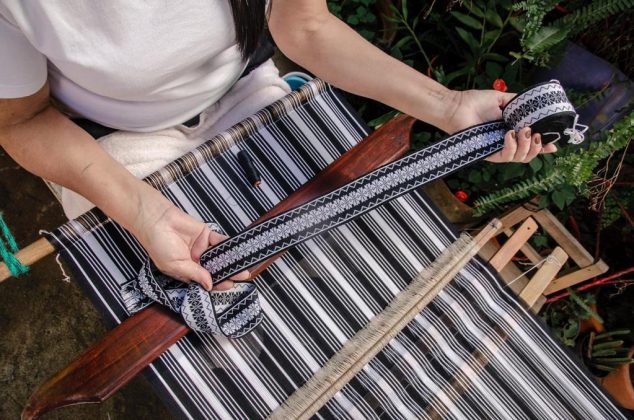Asunción, Agencia, IP.- Paraguay hopes to get the 60 list Poncho Para’i to be entered next week on the List of Intangible Cultural Heritage in Need of Urgent Safeguarding from UNESCO. The Poncho Para’i from 60 stripes is a handmade piece made with techniques whose viability is at risk. Currently, only a dozen artisans make the extraordinary fabric.
In an interview with Tribuna, broadcast by Paraguay TV, the Director of Protection of the Intangible Cultural Heritage of the Paraguayan Institute of Crafts (IPA), Zulma Masi, reported that next week, the 18th Meeting of the UNESCO Intergovernmental Committee will be held in Botswana, where Paraguay aims to receive the Declaration of the Intangible Cultural Heritage of Humanity for the Poncho Para’i from 60 stripes.
In the interview with the state channel, Masi explained that this poncho has three parts: «the body, which is the central part, which has 60 stripes; the entire body of the poncho is finely woven by hand with very fine mercerized cotton threads; the part of the guard or the «fajita», which is part of the neck and made separately, and the fringes that are also made between two artisans.
«The entire production process of this takes considerable time that the artisans divide between their domestic activities,» Masi explained.
She also pointed out that this piece is made on a rustic waist loom, which is called that because the artisan has a base that she wears tied to her waist while she passes thread by thread on the loom. «The master craftsman has to sit for hours and hours weaving with the thread, the plain, the comb, and various elements that she makes into the work tools,» she said.
She noted that the result is a fabric that «looks purchased but completely handmade.» «It is so difficult to explain because to understand the technique of making the poncho, it is necessary to experience it,» she said.
The origin of this traditional Piribebuy fabric is related to a popular legend of this town, where 60 soldiers who died during the Triple Alliance War had been buried with black and white ponchos, which are the characteristic shades of the Poncho Para’i of 60 stripes.
«Now the artisans are making other types of products, always in an artisanal way and using the same technique, combining other colors and designs, such as shawls, purses, in which the technique is applied,» said Masi.
However, the small number of master artisans who continue to work with this traditional technique, which is between 10 and 12 women, makes their inclusion on UNESCO’s List of Intangible Cultural Heritage in Need of Urgent Safeguarding.
Currently, few master craftswomen master the manufacturing technique.
«It is urgent because it is already a technique on close to extinction because it is seen in the territory that there are already few master craftswomen who are doing it, and if one dies or the others dedicate themselves to something else, this technique can disappear,» Masi warned.
She explained that UNESCO offers an urgent category for cultural expressions that, if nominated, are given the possibility of receiving financial assistance to improve the working conditions of artisans and promote training so that the technique can survive in time.
«With this financial resource, it will be possible to execute a safeguard plan in Piribebuy with the artisans,» she said.
She explained that if the UNESCO declaration is obtained, the already designed safeguard plan will be immediately implemented, with an execution time of 18 months.
«Once it comes out, already in 2024, we have to start holding coordination meetings and see all the needs to get to work,» she said.
She added that the Paraguayan Institute of Crafts (IPA) has been working for a few years, highlighting this textile «which is truly representative not only of Piribebuy but of the entire country.»
She finally highlighted that in Paraguay’s 17 departments, crafts like the poncho para’i, are entering that phase of extinction and represent a challenge to work and maintain.

